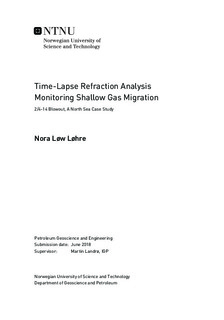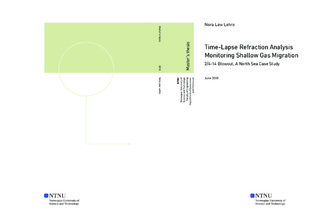| dc.description.abstract | In January 1989, the drilling of well 2/4-14 situated in the North Sea took a dramatic turn of events when encountering a high-pressure zone. The well kicked and the situation eventually developed into an underground blowout. The blowout lasted for 326 intense days, and by drilling the relief well 2/4-15, the well was finally killed in December 1989. In close proximity to the well, a tunnel valley system is present. Due to the geology, structure, and infill of these kinds of systems, they have potential to act as excellent recipients and conduits for migrating gas. Repeated seismic has been acquired over this area from 1988 to 2009, providing a great potential for mapping and investigating the gas and its movements.
The study is a continuation of the specialization project 4D refraction time-shift analysis of a shallow subsurface gas flow, with the aim to perform a time-lapse refraction analysis on three 2D surveys acquired in 1988, 1990 and 2009. Refractions primarily travel in the horizontal direction, in contrast to the more vertical travel path of reflections. The principle difference between these methods is that the offset for refractions is larger in relation to the depth of the interface aimed to be explored. Utilizing the horizontal energy to generate time-shifts show variations in velocity at shallow depths, that might not be detected with conventional reflection methods (Zadeh & Landrø, 2011).
Throughout this thesis, two refractions from three repeated surveys have been successfully processed and analyzed. The results show estimations of significant time-shift anomalies in close proximity to the blowout well and the tunnel valley system. Interpretations of gas from the blowout both migrating into the tunnel valley system and out of it within a time-span of 20 years has been made. This thesis demonstrates the potential 4D refraction time-shift methods have as a complementary 4D analysis technique. Showing its ability to detect changes in velocity in shallow subsurface layers, where conventional reflection seismic methods might be inadequate. | |

